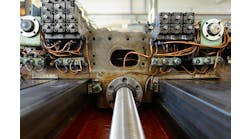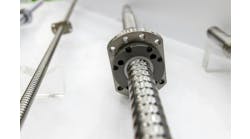I started my career as a controls engineer working on various process lines related to food and pharma. Playing in the process control world seemed like a good career choice. I started designing small processes and creating piping and instrumentation diagrams (P&IDs). I enjoyed creating the process flow and adding the control devices and instrumentation and then programming it all. However, reality set in once the on-site work started. I found that process control can be dangerous to your health and boring, like waiting for water to boil. And the pasta, when it's all done cooking, is not worth it.
Moving to the machine side of control was a great decision for me. Not only is it a joy to bring a machine to life during startup, I was well-suited to create the control design and step sequence programs. I could see it running before it was designed.
At the end of a machine control project, it was easy to see the results of your work as the machine cycled and produced parts. At the end of a process control project, I was staring at a bag of power or a large tank that I think was filling with “stuff” because the level sensor said so.
Machines are cooler than processes, and no temperature control is needed. After just a few process control projects were under my belt, I had several experiences that solidified my thoughts on machine vs. process. Machines are better. Process control can be dangerous, and sometimes you may need to run.
My first process control project was at a producer of specialty chemicals used in herbicides, pesticides and other products. This included Red Dye No. 7 and Vitamin D for animals.
I did some integration work at the facility in the 1990s, right around the time the Environmental Protection Agency added the company to its list of Superfund sites due to soil and groundwater contamination. I do remember there not being a single weed in sight of this large facility. They probably sprayed for that, right?
While I was there, I heard that a byproduct of Red Dye No. 7 was radioactive. I was skeptical about that until I saw an electrician being hosed down right in the middle of a gravel walkway I used several times a day. The electrician had stepped on a valve, breaking it and causing a toxic liquid to cover a good part of his lower body. He was taken away in what looked like a large lead-lined tank on a trailer. The door on the tank looked to be a foot thick. I wonder how he likes process control today.
I also found that one of the chemicals used in a process at the site burned aggressively if it leaked and came in contact with the moisture in the air. I learned this from a chemical engineer, with a PhD, who taught me a lot about process control. One thing he taught me was that it was important to follow him without question if he started running. He said this after seeing a fluid spraying out of a vent while we were on a roof at the site.
I later learned that people did run when the facility caught on fire a year or so after I was there. The massive fire, caused by a leak, was 50 feet from the motor control center (MCC) I was working on. Although it ran well, the MCC didn't make it.
The second process control project I worked on was at a large pharmaceutical manufacturer. I remember a sign on the stairway that said, "Do not enter; stay off roof; benzene is present." The problem is benzene vapor is heavier than air, which can make it sink into low-lying areas such as the area I was working in. Great. Benzene, a known carcinogen, was being used in this drug-manufacturing process.
That's not so bad. What was bad was that I was sitting under many pipes next to a large, 30-foot diameter tank. One of the pipes directly above my desk was labeled sulfuric acid. I sat under it for about a month. When I returned for some more process additions months later, the desk was gone and a large area of the concrete flooring was etched away. The acid leaked, and it would have landed directly on my head. The desk didn't make it.
Process bad, right? It gets worse. The tank I was controlling made a drug that was very similar to nitroglycerin. As a matter of fact, if the tank contents got too hot, just a few degrees over the process temperature set point, it would burn it and turn the 10,000 gallons of material in the tank into an extremely dangerous and unstable explosive liquid. That's a big bomb about 50% more powerful than TNT. Boom. Process control may kill you.
Heck, I haven't even gotten to the fact that process control is often a long-term project requiring significant time on-site, in the middle of a cornfield, during development and testing. Most processes are too big to assemble and test in the shop. And let’s not even talk about updating an obsolete DCS system's software and operating system.
So, I moved to the machine control field. It's a great choice and definitely cooler and safer than process control. Watching automation operate in an automotive manufacturing facility or at other discrete manufacturing sites is quite impressive, and designing and programming it is quite rewarding. Yep, you can smash you finger, and I worked on machines that made explosive devices and assembled rockets. But a little machine-control danger is better than waiting for the pot to boil.






